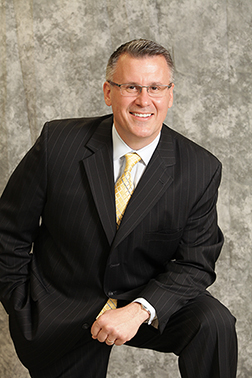
Jeff Slivka recently took leadership of New Day Underwriting Managers as the company’s new president. Slivka helped launch the company in 2005 and has since grown into an award-winning, specialty intermediary of environmental and construction-related professional liability insurance coverages and risk management services.
He had previously served as executive vice president and COO supervising the company’s day-to-day operations and business development efforts. Slivka will retain these responsibilities, while also concentrating on the development and growth of New Day’s national carrier network, marketing and producer training programs.
 Slivka explored the latest contractors professional and pollution liability insurance trends at the 35th IRMI Construction Risk Conference held November in Las Vegas, Nevada. This included outlining today’s coverage, claims and first-party liability issues and challenges with more than 500 insurance agents, brokers, attorneys, underwriters and executives responsible for managing and insuring construction project risks.
Slivka explored the latest contractors professional and pollution liability insurance trends at the 35th IRMI Construction Risk Conference held November in Las Vegas, Nevada. This included outlining today’s coverage, claims and first-party liability issues and challenges with more than 500 insurance agents, brokers, attorneys, underwriters and executives responsible for managing and insuring construction project risks.
“Insurance products that protect contractors against professional and environmental liability continue to evolve in tandem with the ever-changing and expanding project delivery methods offered throughout the construction marketplace,” said Slivka. “In the past two years, we have seen significant expansion of the marketplace along with advancements in contractors professional liability products, such as the first party rectification or mitigation coverage offered under contractors professional liability insurance policy forms, as an example.”
Slivka’s market update reviewed the recent trends and developments surrounding newly identified exposures and the latest forms, advancements and supplemental coverages surrounding the Contractors Pollution Liability (CPL), Pollution Legal Liability (PLL), Contractors Professional Liability (CPrL) and Owners Protective Professional (OPP) marketplace. Among these were:
- Developments in Contractors Pollution Liability for the construction industry and Pollution Legal Liabiltiy for all types of property owners and industries
- Types of professional liability claims that carriers are experiencing resulting from professional services performed by contractors
- Difference between first-party rectification, mitigation and protective coverages offered by the marketplace, which includes design error restitution for errors in professional services performed by or on behalf of construction firms
CBO caught up with Slivka to talk underwriting, insurance and leadership in the construction industry. Read his thoughts below.
CBO: You mentioned focusing your efforts on development and growth of New Day’s national carrier network, marketing and producer training programs. How do you plan to do this, and do you have any timely goals?
JS: I think the answer to this is simple—we just have to do more of the same. At New Day, we live in a confusing area of the insurance marketplace. There is a lot of complexity surrounding exposures, risks, and claims and the ability to customize the insurance products that are available. Our goal is to try to simplify this entire process for our clients. We want to provide a lot of education throughout the process and give our clients the direction needed to determine the optimal solution for their insureds.
As a specialty intermediary, our direct client is the retail insurance broker, so our indirect client is the buyer or the insured. Our job is to ensure the retail broker understands the terms and conditions of the product, the application of each product and the key features/benefits of each product and carrier.
So, to grow, this means expanding the current technical base of individuals within the organization. Right now, we have eight producers we refer to as the consultants—a mix of professional engineers, environmental engineers, geologists and lawyers, all with insurance broking or underwriting experience. That skillset is really why a lot of our clients choose New Day. We also provide detailed direction: a fairly lengthy document providing an overview of the coverages offered by certain carriers that competed for a specific account. Throughout this process we take certain policy forms and customize them to fit the needs of buyers.
Our main focus is on growing our current retail broker client basis, but at the same time ensuring we have the people and ability to service our current clients. The other important thing to note is we don’t accept business from just anyone—we are what’s called a closed broker. We put a lot of effort into qualifying new broker partners (as we call them) before we begin a relationship, and we hope those new clients are doing the same with us. We want to be sure we are working with companies and people with similar business philosophies, interests and desire to produce the optimal solution for their clients.
CBO: What key areas do you see in need of improvement at New Day?
JS: So, we have built this process that simplifies a lot of areas of insurance and risk management for retail and insurance brokers, but we are still in only two areas of insurance. We feel there may be opportunity to expand into other areas or lines of insurance. We hear all the time, “Boy, if you could just do the same thing in the areas of cyber liability, management liability or employment practices...” That’s not really on the board currently—but it may be something we move towards in the future, provided we find the right people with the proper technical background.
We firmly believe anyone can go out in the marketplace and secure a quote for any type of insurance. However, whether they can assess that quote for quality of coverage is a whole different ball of wax. We wouldn’t be able to do that without the key people at New Day. We are always looking for good people with a specific technical skillset. That individual must have the ability to communicate effectively the value and features of insurance products and can match those products up with the risks, exposures and claims that clients are currently seeing in the industry. That person also has to have a strong desire or commitment to servicing those clients. We strongly feel we have those people at New Day.

CBO: What do you see as far as improvements to the underwriting and insurance risk arena overall?
JS: I think no matter what industry you look at the lack of quality talent emerges as a top concern. The insurance industry is no different. One of the big issues we face is the lack of underwriting talent. On the contractors’ professional liability side, the marketplace has doubled in the past three years and in only sixth months, we have seen three additional markets come into the picture. The market is expanding faster than we can produce underwriting talent. That slows down the process because decision making is more centralized.
You have underwriters that aren’t sure of themselves. Honestly, some don’t even understand the product they are offering, let alone understand the risks associated and the hurdles associated with overcoming that risk. Now, you can flip the problem and say—it’s a great time to be an experienced underwriter, if you know your stuff.
CBO: What trends do you see affecting underwriting/risk in the coming year?
JS: We live in this little world where we are going to see continued product expansion and marketplace growth. A lot of carriers want to get into this area of insurance because it’s profitable right now. You are having first party coverages emerging—on both the contractors professional liability as well as the environmental liability products, where the insurers can make a claim against their own policy. That’s very different from the typical third-party liability claim.
When it comes to these first-party claims, claim adjusters can’t sit and wait until other carriers on other lines of insurance determine their position. They need to act immediately, get involved and not take a passive approach because this will only impact their position as well as the insureds. Carriers entering the marketplace need to understand this.
Under these first party coverages, we have had multiple carriers pay million-dollar claims much quicker than the typical liability claim. That’s a huge benefit. On the other hand, I have seen situations where the buyer doesn’t even know that they have this first-party coverage or understand the reported provision attached to such coverage. Because of this, the insured may move forward in trying to remedy or fix a design error without notifying the carriers, or they may report it late because they didn’t realize they had coverage for the exposure. This trend in properly reporting of claims is a big concern of mine.
General speaking, cyber liability is also becoming much more common in the construction industry, if only as a topic for discussion. I think the need for it will continue to trend, and quickly. Project coverage can be a nightmare when it comes to professional liability. It continues to be fairly expensive (although there is a reason it is expensive), and few carriers are willing to offer appropriate limits for some of the larger projects—I’d say those $500 million or higher.
There are only three to five carriers that are willing to offer coverage on those projects. It’s also difficult to get the customization that you need at the pricing you can afford. Another trend is in owners taking advantage of OPPI products. I would expect to see or have seen owners take more advantage of that—it’s excess coverage for the owner so it is provided at a much lower cost than typical or primary project professional liability insurance for the design team.
For more information, visit New Day Underwriting.



